
Tennis elbow (lateral epicondylitis) occurs when repetitive movements strain the tendon that connects your forearm muscles to your elbow. It’s commonly caused by sports, manual work, or frequent gripping motions. Symptoms include pain, weakness, and stiffness, especially when grasping objects or moving your wrist. Most cases improve with rest, physiotherapy, and pain relief, though some may require injections or, rarely, surgery.
Tennis elbow is an injury that causes pain and inflammation in the outer part of your elbow. It’s usually a repetitive strain injury, meaning it develops from repeated motions that overwork the tendons in your forearm. These tendons connect your forearm muscles to your elbow. When they’re strained too often, tiny tears form, leading to pain and discomfort.
Despite its name, tennis elbow isn’t exclusive to tennis players. It can happen to anyone who frequently grips, twists, or swings their forearm - whether in sports, manual work, or everyday activities. The medical term for tennis elbow is lateral epicondylitis which refers to inflammation in the extensor muscle tendon on the outside or side of your elbow.
The pain often starts as mild discomfort but can worsen over time, making simple tasks like shaking hands, lifting objects, or even typing difficult. If the pain persists or interferes with daily activities, it’s important to seek medical advice to explore your tennis elbow treatment options.
Tennis elbow typically starts with pain, burning, or aching along the outside of your forearm and elbow. At first, the discomfort may be mild, but if the repetitive motion causing the strain continues, the pain can worsen over time.
You may notice stiffness in your elbow, making it harder to move your arm freely. Swelling may also occur, though it’s not always present. A weakened grip is another common symptom - holding objects like a racket, pen, coffee cup, or even shaking hands can become difficult.
As the condition progresses, pain may spread down to your wrist, even when your arm is at rest. You may experience discomfort when placing your palm-down on a table and trying to lift your hand against resistance.
Since these tennis elbow symptoms can also be linked to other conditions, it’s important to consult a healthcare provider for an accurate diagnosis.
Tennis elbow is often caused by repetitive strain on the tendons that connect your forearm muscles to your elbow. While racket sports like tennis, squash, and racquetball are common culprits, many other activities can lead to this condition.
Over time, repeated movements cause tiny tears (microtraumas) in your tendon, leading to pain and inflammation. If left untreated, the condition can worsen, making everyday tasks more difficult.
Some people are more likely to develop tennis elbow due to repetitive motion, age, or lifestyle factors:
Reducing strain and maintaining good technique can help lower your chances of developing tennis elbow.
You can’t know for sure if you have tennis elbow without a diagnosis from a healthcare provider, but certain signs may indicate it. The main tennis elbow symptom is pain on the outside of your elbow, which can feel sharp, burning, or aching.
The pain often worsens with twisting or bending movements, such as turning a doorknob, opening a jar, or swinging your arm. Over time, discomfort may spread down your forearm and into your wrist, especially at night.
If you notice persistent pain that interferes with daily activities, it’s best to consult a medical specialist for an accurate diagnosis and treatment options
You don’t always need medical attention for tennis elbow, but certain symptoms indicate it’s time to see a healthcare provider. If your pain persists for more than two weeks despite rest and self-care, affects your ability to work or perform routine tasks or worsens over time, seeking medical advice is recommended. In rare cases, untreated tennis elbow can lead to chronic pain and weakness, requiring specialised tennis elbow treatment.
Tennis elbow can often be managed with pain relief medication, physiotherapy, and braces to reduce strain. If symptoms persist, tennis elbow treatment options include corticosteroid or PRP injections, needle fenestration, tenotomy, or shockwave therapy to promote healing. Surgery is a last resort for severe cases that don’t improve after six months.
Over-the-counter (OTC) pain relief medicine for tennis elbow typically includes nonsteroidal anti-inflammatory drugs (NSAIDs) like ibuprofen (Advil, Motrin) or naproxen (Aleve), which help reduce pain and inflammation. Acetaminophen (Tylenol) is another option, though it primarily targets pain rather than swelling.
It’s important to follow dosage guidelines and consult a healthcare provider before taking these medications for more than 10 days in a row, especially if you have underlying health conditions.
Physiotherapists and occupational therapists play a key role in treating tennis elbow by helping patients reduce strain, improve strength, and restore function.
A therapist may assess how you perform certain movements, whether in sports or work, to identify ways to reduce stress on the injured tendon. This could involve adjusting technique, posture, or equipment to prevent further damage.
They also guide you through specific exercises designed to strengthen your forearm muscles and improve flexibility, helping your tendon heal and reducing your risk of future injury. In some cases, they may recommend a forearm strap or brace to relieve pressure on the affected area and support recovery.
By tailoring treatment to your individual needs, physiotherapists and occupational therapists help you to regain pain-free movement and return to daily activities safely.
Corticosteroid and platelet-rich plasma (PRP) injections are the most commonly used treatments for tennis elbow. Corticosteroids help reduce pain and inflammation, though they may not provide long-term relief if symptoms have persisted for several weeks. PRP injections involve processing a patient’s blood to concentrate healing platelets, which are then injected into the tendon to stimulate tissue repair.
Other, less commonly used treatments include Botulinum Toxin A (Botox) injections to temporarily relax the affected muscles, prolotherapy injections with sugar or salt water to trigger healing, and dry needling which stimulates blood flow and tissue regeneration. A healthcare provider can help determine the best option based on the severity of your symptoms.
Needle fenestration uses ultrasound guidance to repeatedly insert a needle into the numbed tendon, triggering your body's natural healing response. This process encourages blood flow and tissue repair, helping to heal the damaged extensor tendon in tennis elbow. It can be done alone or with platelet-rich plasma (PRP) injections for enhanced recovery.
Tenotomy is a procedure used to treat tennis elbow by breaking down and removing damaged tendon tissue to encourage healing. Using ultrasound guidance, your healthcare provider inserts a needle through your skin into your injured tendon. The needle disrupts the damaged tissue, stimulating your body's natural repair process and improving blood flow to the area.
This technique helps reduce pain and stiffness, allowing your tendon to heal more effectively. It is often considered when other treatments haven’t provided relief and can be performed as a minimally invasive alternative to surgery
Shockwave therapy is a non-invasive treatment that uses high-energy acoustic waves to stimulate healing in your injured tendon. A handheld device is placed on your skin over the affected area, delivering targeted shockwaves to your damaged tissue.
These waves increase blood flow, reduce inflammation, and encourage tissue regeneration, helping your tendon to heal more effectively. The treatment is often used for chronic cases of tennis elbow that haven’t responded to other therapies.
Most people with tennis elbow don’t need surgery, but it may be recommended if symptoms persist for six months or longer despite other treatments. Surgery typically involves removing damaged tissue and repairing the tendon, helping to restore function and reduce pain.
There are two main types of surgery:
Open surgery - a larger incision is made to access and treat your damaged tendon.
Arthroscopic surgery - several small openings allow for a minimally invasive approach.
Most procedures are outpatient, meaning you can go home the same day. A healthcare provider can determine if surgery is the right option for you based on symptom severity and your response to prior treatments.
Recovery from tennis elbow can take anywhere from a few months to over a year, with most people seeing improvement in about six months. Some cases require up to 18 months, depending on the severity of tendon damage, the cause of the injury, and the type of treatment used. While mild cases may heal within weeks, more serious or chronic injuries often need long-term rehabilitation to restore strength and function.
A healthcare provider typically diagnoses tennis elbow through a medical history review and physical examination. They may press on the affected area or ask you to move your elbow, wrist, and fingers in different ways to assess pain and mobility.
If your symptoms suggest another condition, imaging tests such as X-rays, ultrasound, or MRI scans may be used to rule out fractures, arthritis, or nerve issues.
To reduce the risk of tennis elbow, patients can take several preventive steps:
If you’re wondering how to treat tennis elbow, you’ll need to understand the severity of your symptoms. Most cases improve with rest, ice, and over-the-counter pain relief. Physiotherapy can help strengthen your forearm, while braces or straps may reduce strain. If symptoms persist, tennis elbow treatments like shockwave therapy, injections, or, in rare cases, surgery may be considered.
Several conditions can mimic tennis elbow, including golfer’s elbow, which affects the inner elbow, radial tunnel syndrome caused by nerve compression, and cervical radiculopathy where nerve issues in your neck cause referred pain. If tennis elbow symptoms persist, a healthcare provider can help determine the exact cause.
Tennis elbow usually improves within a few months, but in some cases, it can take over a year to fully heal. Recovery time depends on severity, treatment, and activity level. If symptoms persist, a healthcare provider can help explore further treatment options.
Squeezing a ball can help strengthen grip and forearm muscles, which may aid recovery from tennis elbow. However, it should be done gently and without pain, as excessive strain can worsen symptoms. A physiotherapist can guide safe exercises for optimal healing.
Wrist extensor and flexor stretches, along with gentle strengthening exercises like wrist curls and towel twists, are often recommended for tennis elbow. These exercises help improve flexibility, reduce strain, and support tendon healing. A physiotherapist can guide safe and effective movements for recovery.
Ignoring tennis elbow can lead to chronic pain, weakness, and reduced mobility. Over time, the tendon damage may worsen, making everyday tasks more difficult. If left untreated, it can become a long-term condition requiring more intensive treatment. Seeking early care can help prevent complications and speed up recovery.
Tennis elbow is most common in adults aged 35 to 60, though it can affect people of all ages. The risk increases with repetitive strain and overuse of your forearm muscles.
If your elbow pain persists for more than two weeks, worsens, or affects daily activities, it's best to see a doctor. They can confirm the diagnosis and recommend appropriate treatment, especially if self-care measures haven’t helped.

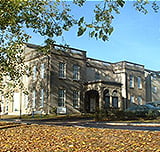
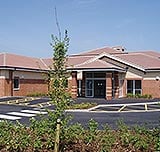
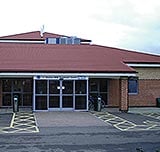

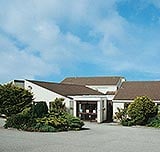

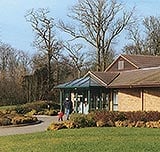
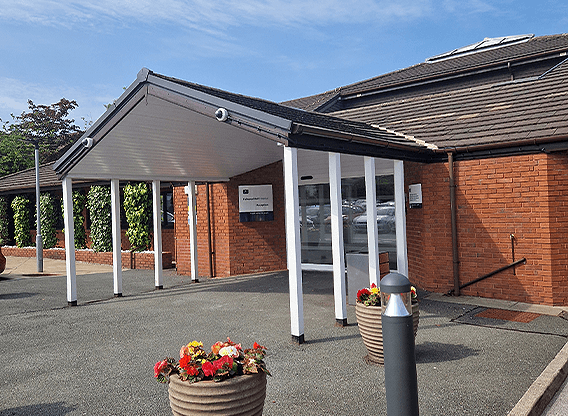


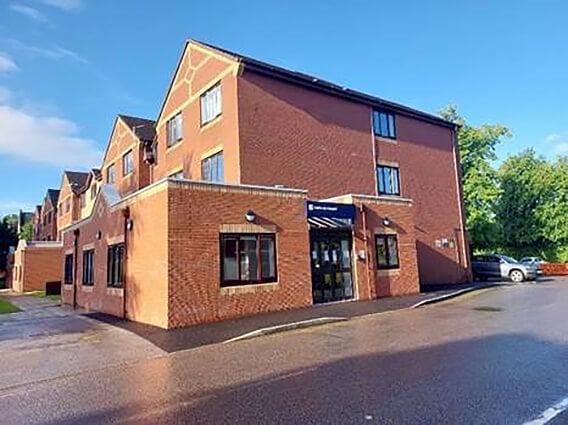


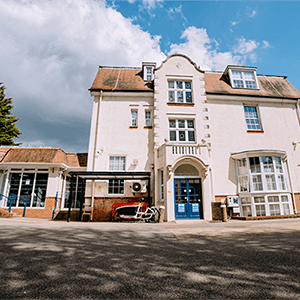
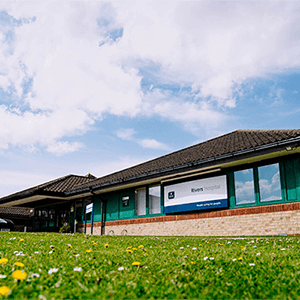

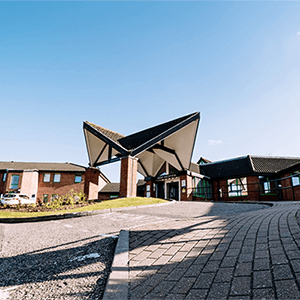


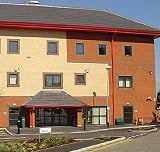

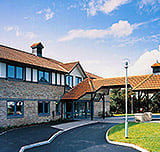
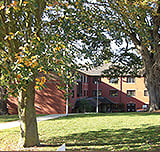

Clifton Park Hospital, in York, Part of Ramsay Health Care UK, has been shortlisted for the 2026 HSJ partnership award.
Ramsay Health Care UK are celebrating after being named as a Gold National Joint Registry (NJR) Quality Data Provider for the second year running, after successfully completing a national data quality audit programme for 25 hospitals offering orthopaedic procedures.
Duchy Hospital in Truro, proudly opened its state-of-the-art Imaging and Outpatient Suite representing a major investment in patient care, designed to enhance diagnostic capabilities and improve the overall experience for patients across Cornwall.
The information, including but not limited to, text, graphics, images and other material, contained on this website is for educational purposes only and not intended to be a substitute for medical advice, diagnosis or treatment. Always seek the advice of your physician or other qualified health care provider with any questions you may have regarding a medical condition or treatment.
No warranty or guarantee is made that the information contained on this website is complete or accurate in every respect. The testimonials, statements, and opinions presented on our website are applicable to the individuals depicted. Results will vary and may not be representative of the experience of others. Prior patient results are only provided as examples of what may be achievable. Individual results will vary and no guarantee is stated or implied by any photo use or any statement on this website.
Ramsay is a trusted provider of plastic or reconstructive surgery treatments as a part of our wrap-around holistic patient care. Our personal, friendly and professional team are here to support you throughout to ensure the best possible care. All procedures we perform are clinically justified.
*Acceptance is subject to status. Terms and conditions apply. Ramsay Health Care UK Operations Limited is authorised and regulated by the Financial Conduct authority under FRN 702886. Ramsay Healthcare UK Operations is acting as a credit broker to Chrysalis Finance Limited.
Ramsay Health Care UK is not currently recruiting for any roles based outside of England. If you are interested in applying for a role with Ramsay Health Care UK, please note that all available positions are advertised exclusively on our official website: https://www.ramsayhealth.co.uk/careers. Be cautious of individuals or organisations that approach you directly for remotely-based roles. Always verify the authenticity of the job offer and be careful with whom you share your personal information. For more information and advice on employment fraud, please visit: https://www.ramsayhealth.co.uk/careers/recruitment-fraud